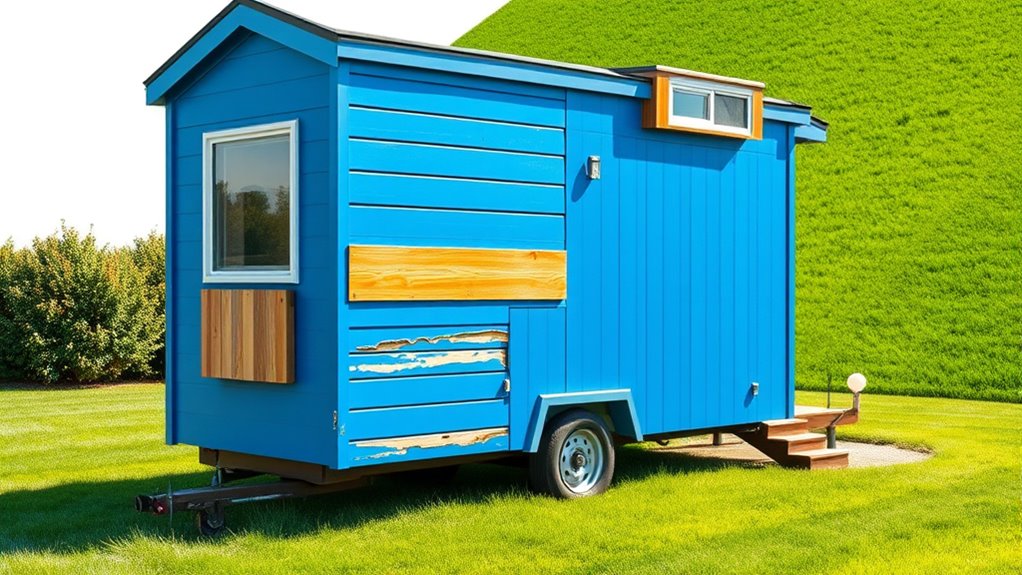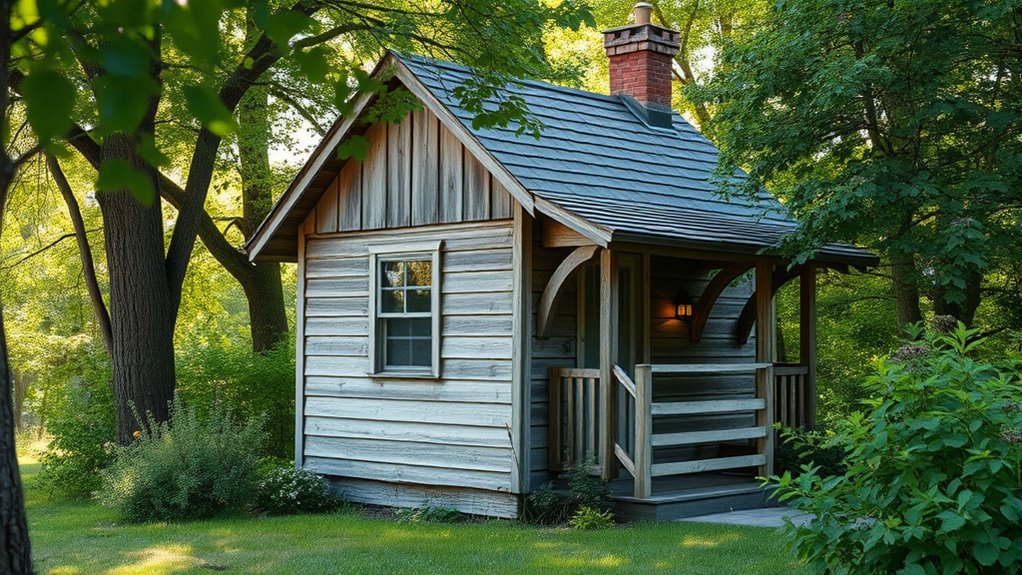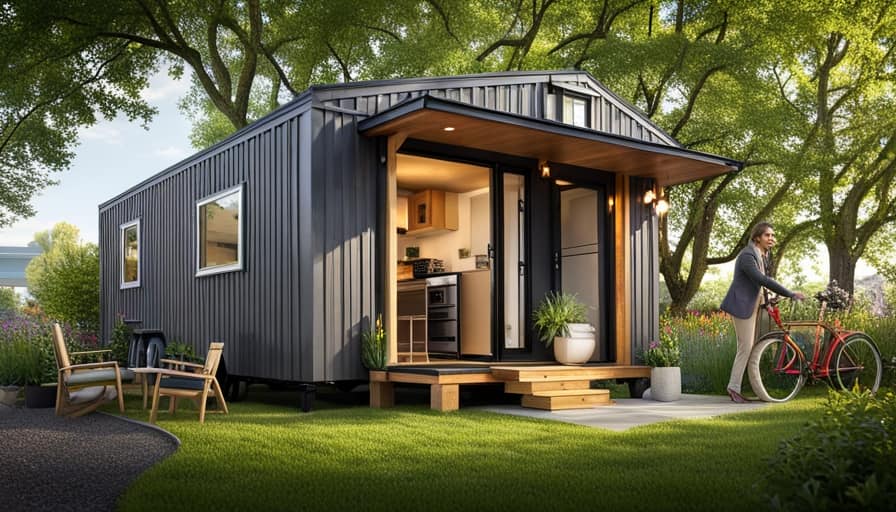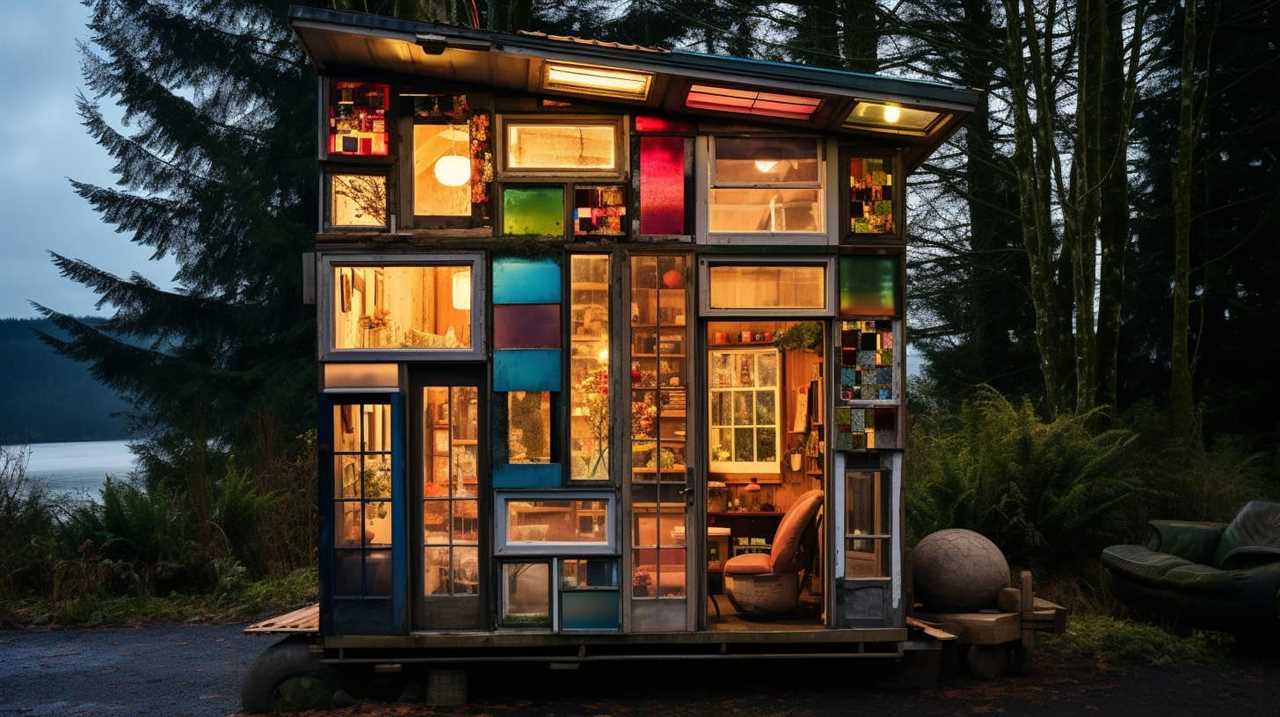Your tiny house is like a delicate seedling—its value can quickly wilt if not properly cared for. Many owners overlook the importance of building codes, zoning laws, or proper documentation, risking a significant drop in resale value. Without these safeguards, you could face costly modifications or even losing your property altogether. Understanding the hidden pitfalls and how to avoid them is key to protecting your investment and ensuring your tiny home thrives long-term.
Key Takeaways
- Non-compliance with building codes or zoning laws can lead to legal issues, reducing resale value.
- Poor craftsmanship or using substandard materials diminishes perceived quality and marketability.
- Lack of proper documentation and permits hampers the resale process and buyer confidence.
- Ignoring updated regulations risks future legal removal, decreasing your home’s worth.
- Failing to maintain records or ensure ongoing compliance can cause buyers to undervalue or avoid the property.

If you’re considering a tiny house, protecting its resale value should be a top priority. One of the most critical factors that can influence how much your tiny home retains its worth is how well it complies with local building codes and zoning laws. These regulations set the standards for construction quality, safety, and land use, and failing to adhere to them can severely limit your ability to sell or even legally place your tiny house on a property. Before you start building or buying, take the time to research your area’s specific rules. Some jurisdictions have strict building codes that tiny houses must meet, including foundation requirements, electrical standards, and insulation standards. Ignoring these can lead to costly modifications later or make your tiny house uninsurable, both of which hurt resale prospects.
Ensuring compliance with local codes boosts your tiny house’s resale value and legal standing.
Zoning laws are equally crucial. Many areas have restrictions on where tiny houses can be placed, particularly if they’re considered accessory dwelling units or mobile homes. Some zones prohibit tiny homes altogether, while others may limit their size, type, or use. If your tiny house doesn’t fit within these legal boundaries, you risk fines, forced removal, or having to relocate your home, all of which diminish its value. To safeguard your investment, it’s necessary to check with local planning departments before purchasing or building. Ensure your tiny house design aligns with current regulations, and if necessary, pursue permits or variances to legitimize your setup.
Beyond just following the rules, you should also aim for a high standard of craftsmanship. Building codes often set minimum safety and quality standards, but exceeding these can boost your tiny house’s appeal and resale value. Use durable materials, professional craftsmanship, and finish your project with attention to detail. This not only ensures compliance but also creates a home that buyers see as well-built and reliable. Also, keep detailed records of permits, inspections, and compliance certificates. These documents serve as proof that your tiny house meets all legal requirements, reassuring future buyers and making the resale process smoother.
Additionally, understanding building code compliance and maintaining open communication with local authorities can prevent unexpected issues during the sale process. Staying informed about changes in building codes and zoning laws is critical. Regulations evolve, and what’s permissible today might not be tomorrow. Regularly check with local authorities or consult with a knowledgeable builder or planner to keep your tiny house compliant. By proactively managing these legal considerations, you protect your investment and considerably reduce the risk of losing value—sometimes up to 20% or more—when it’s time to sell. Your careful planning and adherence to regulations demonstrate your commitment to quality, ensuring your tiny house remains a valuable asset for years to come.
Conclusion
Think of your tiny house as a delicate sailboat—without proper maintenance and adherence to regulations, it can quickly lose its course and value. I knew someone who skipped permits and faced costly legal issues, losing nearly 20% of their home’s worth. By staying compliant, keeping detailed records, and staying informed, you guarantee your tiny home stays afloat and retains its value. Protect your investment now, so it doesn’t drift away when it’s time to sell.
Hi, I’m Emma. I’m the Editor in Chief of Tiny House 43, a blog all about tiny houses. While tree houses are often associated with childhood, they can be the perfect adult retreat. They offer a cozy space to relax and unwind, surrounded by nature. And since they’re typically built on stilts or raised platforms, they offer stunning views that traditional homes simply can’t match. If you’re looking for a unique and romantic getaway, a tree house tiny house might just be the perfect option.















